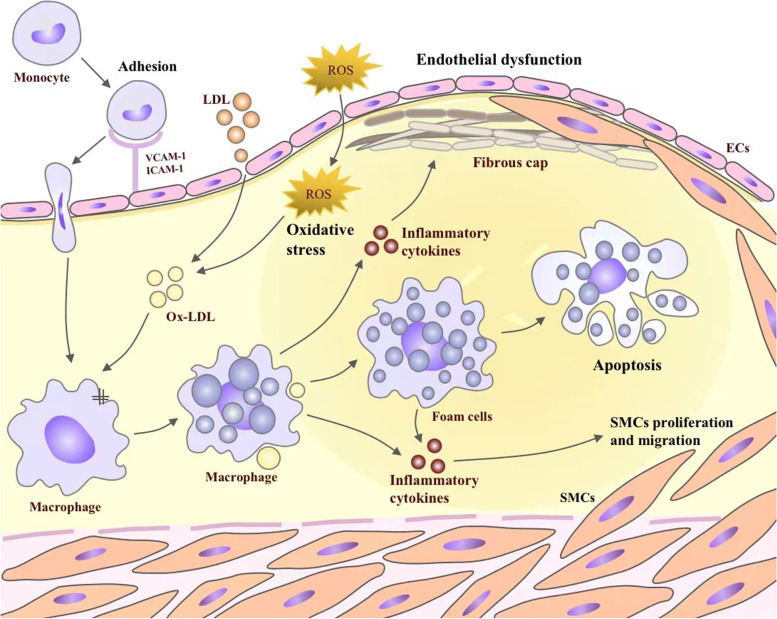Fig. 1.
The key inflammatory mechanisms involved in the development of atherosclerosis. Monocytes are first recruited to developing plaques by VCAM-1, ICAM-1, and E-seletin. Then, monocytes differentiate into macrophages, and reactive oxygen species (ROS) from vascular lumen accumulates oxidizes LDL (ox-LDL). Ox-LDL is mostly taken up by macrophage scavenger receptors and becomes foam cells. Macrophages and foam cells secrete inflammatory cytokines, such as IL-6, IL-12 and TNF-α, which in return exacerbates the inflammatory response. Inflammatory cytokines secrete matrix metalloproteinases (MMPs), which degrades the fibrous plaque. This could lead to plaque rupture and thrombosis. In addition, inflammatory cytokines promote the proliferation and migration of smooth muscle cells (SMCs), which contributes to the formation of fibrous cap. Foam cell apoptosis promotes plague rupture

